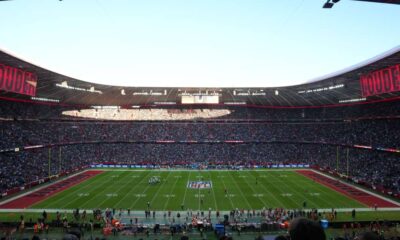Imagine a football game where the end zones were just a suggestion, or the ten-yard lines were a rough guess. It doesn’t paint the clearest picture, does it? That’s where sports field line marking comes in, creating the necessary lines and boundaries that turn a patch of turf into a professional stage for athletes to showcase their talents.
Right from setting the strategic formations to ensuring fair play, these markings hold significant importance. They not only define the play area, ensuring players and referees know exactly where the action should take place, but they also feed into the dynamics of the game’s flow and strategies. And in the highly competitive arena of the USFL, precision can mean the difference between a touchdown and a turnover.
How GPS Technology Revolutionizes Field Preparations
Long gone are the days of manual measurement and chalk lines – today’s grounds crews are turning to GPS technology to stripe their fields. This tech leap brings unprecedented speed and accuracy to the often tedious process of field marking. Whether it’s drawing up the perfect fifty-yard line or ensuring the end zones are uniformly square, the tech cuts down on time and human error, reshaping the method of field preparations in the USFL.
It’s not just about the look, either. These crisp lines preserve the integrity of the game with reliably measured play spaces so that when players step onto the field, they’re stepping into a precisely calibrated arena built for professional-level play.
The Environmental Impact of Innovative Line Marking
There’s a green side to GPS line marking that we can’t overlook. Swapping out the old methods for these high-tech alternatives has a cascading environmental impact – less paint, less waste, and a smaller carbon footprint. Consider the discarded cans and excess paint that were once a staple of field prepping. By minimizing this waste, the league is embracing an eco-friendly identity that resonates with the community’s growing environmental consciousness.
Looking Ahead: The Expanding Influence of GPS Line marking in Sports
What we’re seeing in the USFL is just the tip of the iceberg. The precision and efficiency that come with GPS line marking hold promise far beyond the professional playfields. Consider its application in local community centers, high schools, and college complexes where young athletes take their first steps towards greatness. Here, the technology isn’t just a tool; it’s a message that even at the grassroots level, the commitment to quality and professionalism matters.
This embrace of innovation lays a path for the further integration of technology in sports, hinting at a future where precision enhances every level of the game. It’s a testament to how far the sport has come and a hint at the endless possibilities that lie ahead. As football continues to evolve, so too does every aspect that touches the field, including how we mark it for play.











